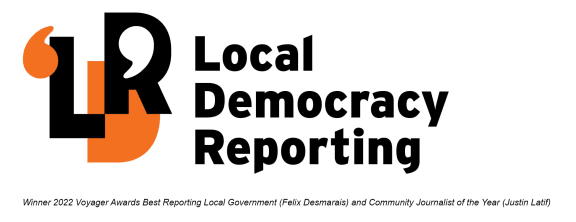The endangered mohua.
Photo: DOC via LDR
Much of the Department of Conservation’s national predator control work in 2023 will be concentrated on the West Coast, and most of that by way of aerial 1080 poison.
Speaking to the West Coast Conservation Board in Karamea, DOC national predator control programme regional leader Tom Belton said the move to a national approach by the department from 2013 had been a significant step forward from the previous regionally managed approach.

The programme was formerly known as ‘Battle for our Birds’.
In the current setup, forecasting or anticipating ‘mast’ years in a scientific approach and lining these up with planned pest control was key to addressing the range of threats to biodiversity, rather than a single pest species approach.
“If you look at our work to coincide with those events (masts) we get a really good result in protection of our birds but also get good possum control,” Belton said.

DOC Western South Island proposed predator control in 2023.
Photo: DOC via LDR
The expected outcomes were reduced rodent and musteloid numbers plus a reduction in possum browse.
This year about five operations had been planned on the West Coast but had been delayed or rescheduled due to the wet winter.
A 20,000ha area at the Copland Pass area ‘treated’ with 1080 in May showed great success with post-treatment surveys detecting zero rats.
A site centred on the Arawhata valley at Jackson Bay scheduled in May was hampered by a delay in the pre-feed and it had now been rescheduled for May next year.
Also in South Westland a 49,148ha in the Abbey Rocks-Mataketake area had been scheduled this winter and was still planned.
An operation over 39,118ha in the Hope/Cascade area was finished about five weeks ago.

Predator control operation areas on the West Coast this year.
Photo: DOC via LDR
A major operation taking the western side of Arthur’s Pass National Park and extending into the Taipo River headwaters was also planned.
Belton said a 300,000ha operation in the Kahurangi National Park area was planned for 2023, a predicted ‘mast year,’ as well as further work in the Arawhata area (including the Waipara valley and the Haast tokoeka kiwi sanctuary).
Tentatively a couple of other operations in the region were being looked at in the next year.
Belton said the majority of work would be on the West Coast, mainly in the northwestern Kahurangi National Park area.
He gave a number of examples where there had been ongoing pest control for over 20 years which had turned around the threat to particular species.
This included the Landsborough Valley mohua population which in the late 1990’s was down to 14 known birds.
Since then there had been seven aerial 1080 operations and ongoing ground control of pests.
Last year, for the first time in 21 years mohua were found to be the most common birds in a threefold increase from the original count to 444, he said.
Local Democracy Reporting is Public Interest Journalism funded through NZ On Air



















Discussion about this post